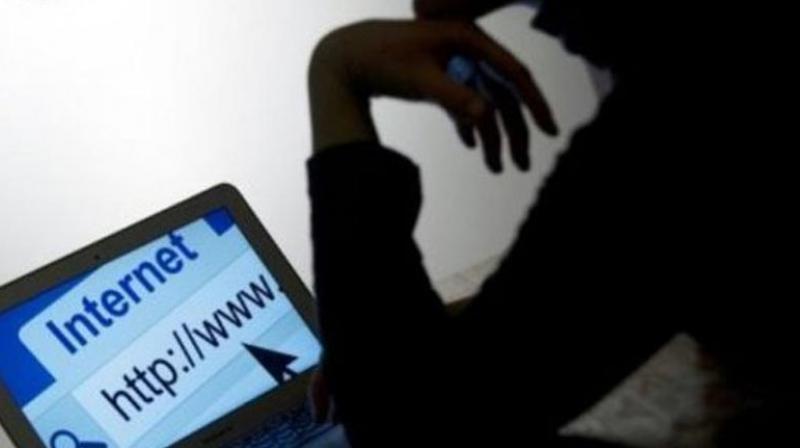India has more users of nextGen Internet than US

Hyderabad: India is the largest adopter of Internet Protocol version 6 (IPv6) across the world with 242 million users followed by the US. Reliance Jio has the most IPv6 users followed by Idea and Vodafone in India, according to APNIC Labs. Reliance Jio was built using IPv6 while Airtel continues with both IPv4 and IPv6. Despite having a huge customer base of 7.9 crore, only 67 lakh users of Airtel use Ipv6.
IPv6 is the successor of IPv4 which set the rules for IP address when communicating on the internet. IPv4 has only 4.1 million addresses which are not enough to cater to the world’s needs of internet communication. So giving one IP to a device forever is difficult, especially considering the number of smart devices coming out each day. To overcome this problem of shortage of IP addresses, IPv6 was developed, which improves on the addressing capacities, thereby practically making available an almost infinite pool of IP addresses.
Experts noted that currently the IPv6 populace are the smart phone users in our country but with Internet of things (IoT) coming into play through smart TV, smart phone, smart watches, gadgets and connected devices the country will see huge increase in adoption of this protocol.
Mr Sridhar Nallamothu said, “Mobile usage is increasing especially with the usage of two-three devices. Especially connected devices like IOT devices like the smart TV have separate IP addresses. Demand is increasing, IPv6 is being used. Lot of people are using static IP which Internet service providers can give, through which the world will know about our connection. This demand of static IP can be catered using IPv6, so there is an increase in India.”
If there is static IP address and you want to check on CC cameras being used at home or some location, you can connect to it using your unique IP address. If it keeps changing one cannot connect every time.
Mr Srinivas Kodali independent security researcher said, “The real reason India has got a large chunk of Ipv6 is because India doesn't have a significant number of IPv4. We couldn’t buy more of those. Also large chunk of IPv6 were bought by Jio, because it wanted to expand its market.”
He added that surveillance happens because you get identified by your network’s IP and if you have a larger number of IPs, it can be used to identify a person in more ways.
Mr Kodali said, “For instance, the entire household might have one IP because of the Wi-Fi, but each device can be assigned a new IP. It could allow tracking of devices in a unique way but directly protocol itself has nothing to do with surveillance.”
Compatability issues slow down adoption rate
The pace of adoption of IPv6 across the world has slowed down over the past year. Despite the buzz around Internet of Things (IoT)/M2M Communications increasing to a din and IPv6 being the enabling platform, the adoption is slow. According to APNIC Labs, “We’ve exhausted the IPv4 address pool, yet IPv6 is deployed across less than 20 per cent of the Internet globally.”
National IPv6 Deployment Roadmap v-II was released by Department of Telecommunications in March, 2013 for IPv6 transition in the country in a phased and time bound manner. According to a DoT representative, “Although considerable progress has been made in IPv6 transition across various stakeholders, there are segments where the transition is taking a longer time due to the legacy networks and complex nature of the issue.”
All mobile phone handsets, data card dongles, tablets and similar devices used for internet access supporting GSM/CDMA version 2.5G and above sold in India are capable of carrying IPv6 traffic either on dual stack (IPv4v6) or on native IPv6.
Experts opine that this slowdown is because of the lack of backward compatibility and people are not ready to change their working systems immediately. Mr Sridhar Nallamothu, founder of Computer Era magazine, said, “Due to backward compatibility issues, such technology adoption is less. Even in technology, a lot of people feel comfortable with existing infra and do not want to upgrade fearing compatibility errors. They will try to run on old protocols for years and it is merely the insecure feeling of encountering issues in their day to day operations that stops them from venturing further.”
Consequently Internet Service Providers with high growth in their customer base are now under high IPv4 address stress.
Often with Ipv4, people tend to faces errors like IP address conflict. There are a lot of attempts being made to adopt ipv6 but a lot of companies are not able to move. Either ways, browsers will be able to identify the connection and will allow you to connect. According to the DoT representative,
“Government organisations are on the path to transit to IPv6. NIC is working to transit the websites of all government organisations hosted on their server. As per industry association, the mobile handsets (2.5G and above) are IPv6 (dual stack) ready.” So there are many areas of the Internet which are yet to experience major pressures to deploy IPv6.

